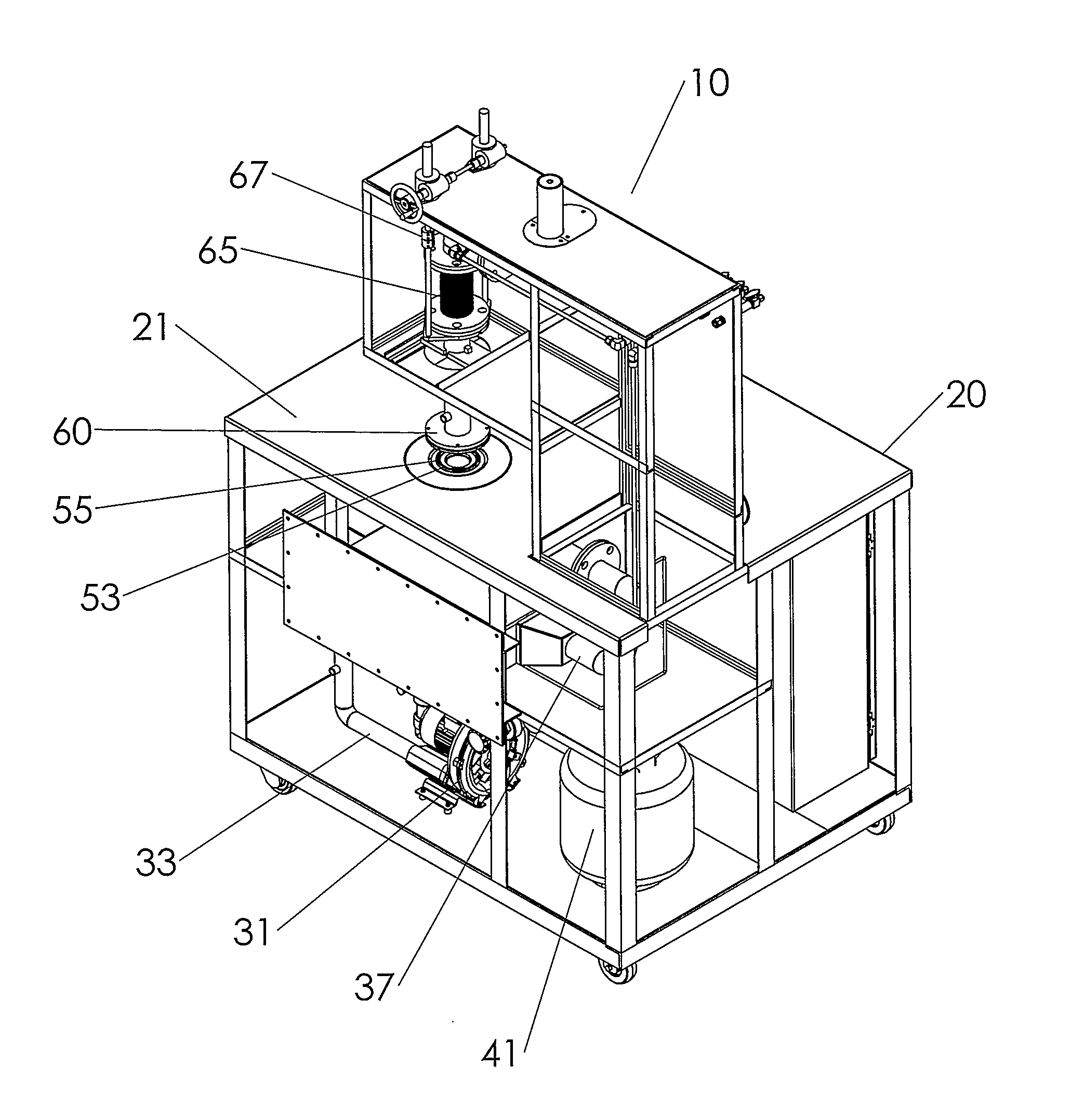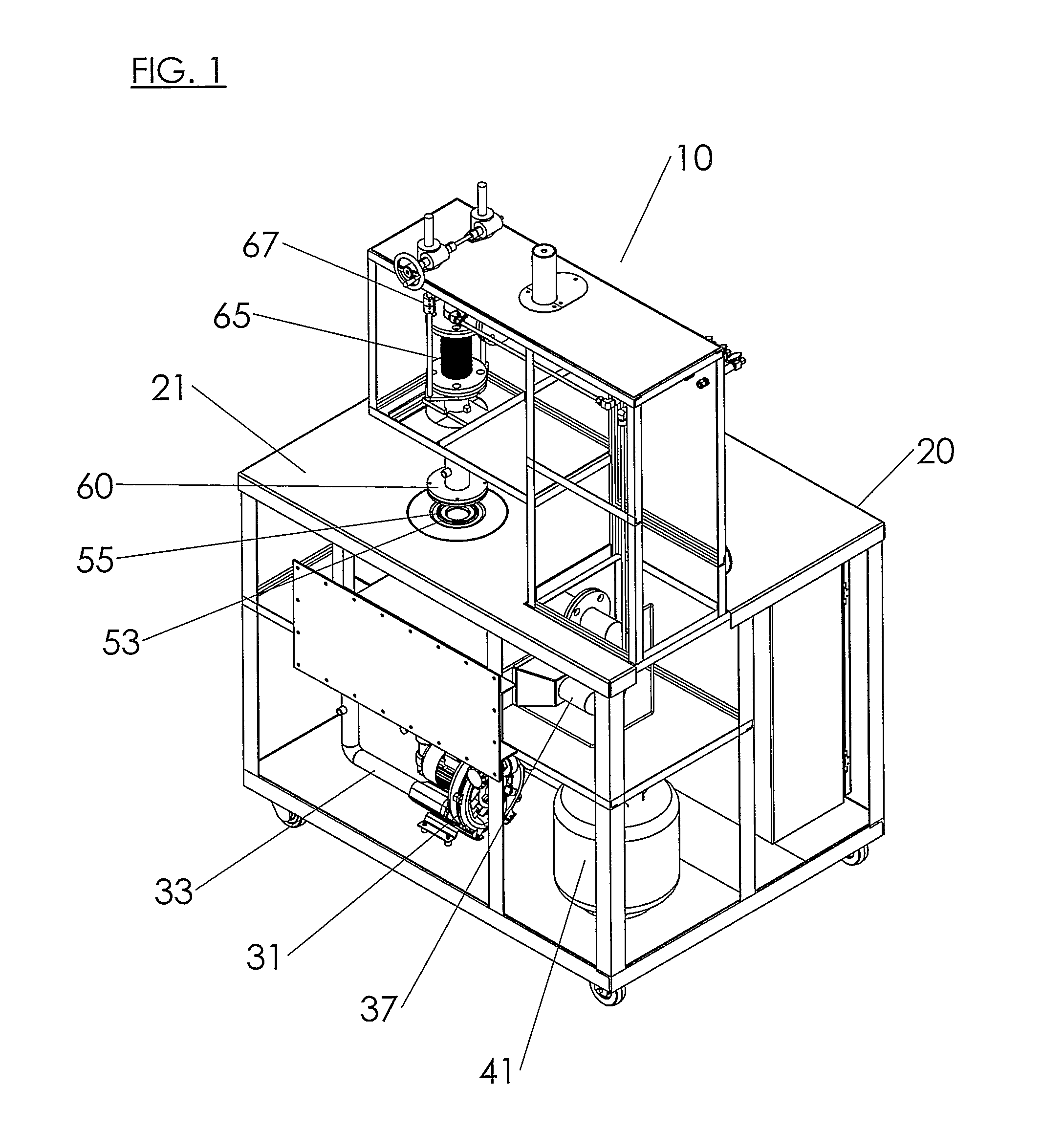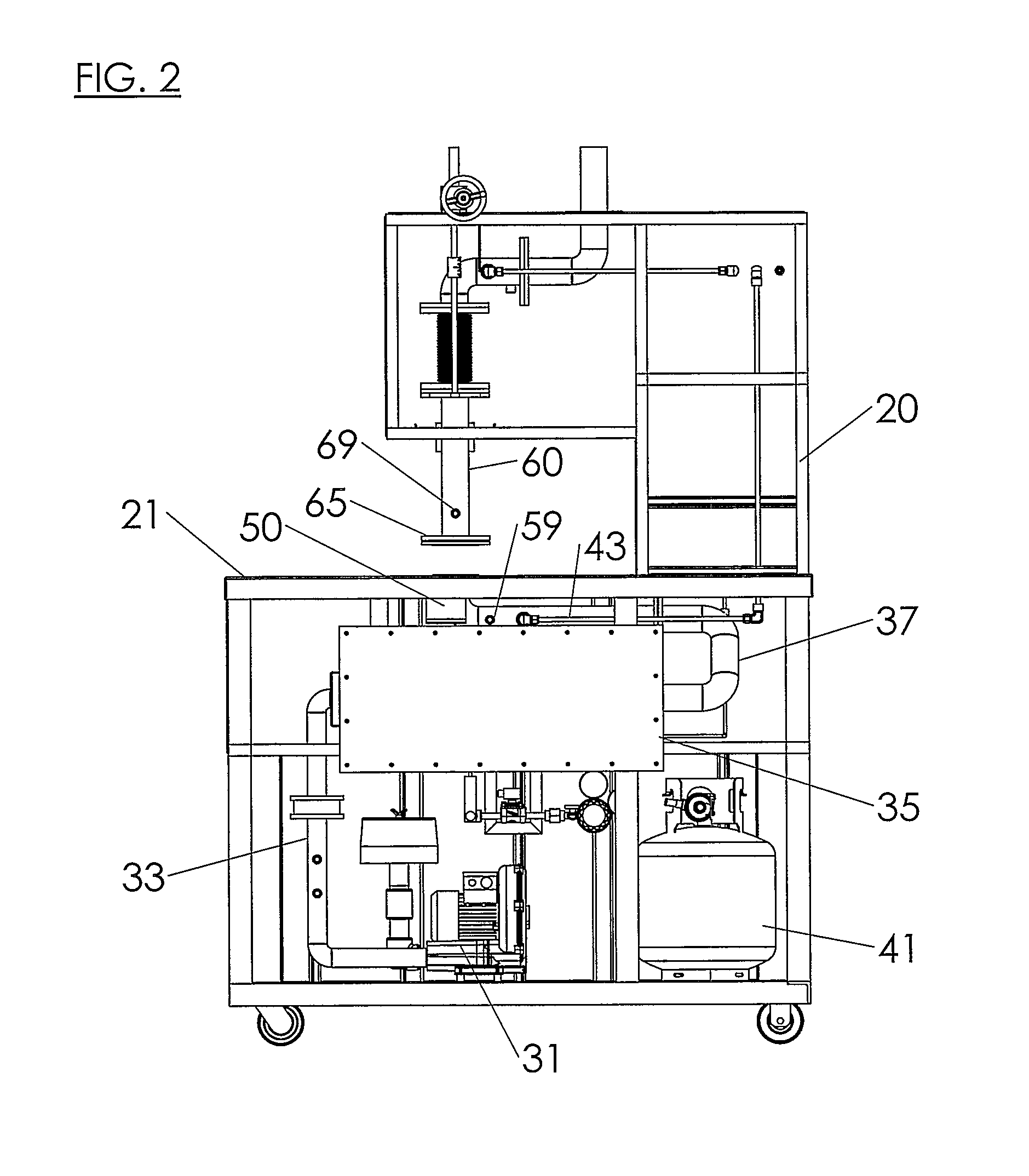Monolith catalyst test system and method for its use
- Summary
- Abstract
- Description
- Claims
- Application Information
AI Technical Summary
Benefits of technology
Problems solved by technology
Method used
Image
Examples
Embodiment Construction
[0036]A test system 10 made according to this invention allows a section of a monolithic catalyst element to be tested without requiring a piece of the catalyst to be removed from the element. Although the system 10 described herein is intended for use catalyst elements typically found in industrial engines, the system 10 could be used to test any monolithic catalyst element for any industry. These elements are especially common in a range of environmental compliance process units.
[0037]Testing is accomplished by providing a means of conveying fluid through the catalyst element and allowing those means to test different areas or sections of the element. A preferred embodiment uses a test stand 20 which includes piping above and below the catalyst as the conveying means, air as the main fluid and propane as the test fluid, that is, the constituent fluid acted upon by the catalyst element. A blower 31 creates the air stream and passes it into a blower outlet piping 33 which is connect...
PUM
 Login to View More
Login to View More Abstract
Description
Claims
Application Information
 Login to View More
Login to View More - R&D Engineer
- R&D Manager
- IP Professional
- Industry Leading Data Capabilities
- Powerful AI technology
- Patent DNA Extraction
Browse by: Latest US Patents, China's latest patents, Technical Efficacy Thesaurus, Application Domain, Technology Topic, Popular Technical Reports.
© 2024 PatSnap. All rights reserved.Legal|Privacy policy|Modern Slavery Act Transparency Statement|Sitemap|About US| Contact US: help@patsnap.com










